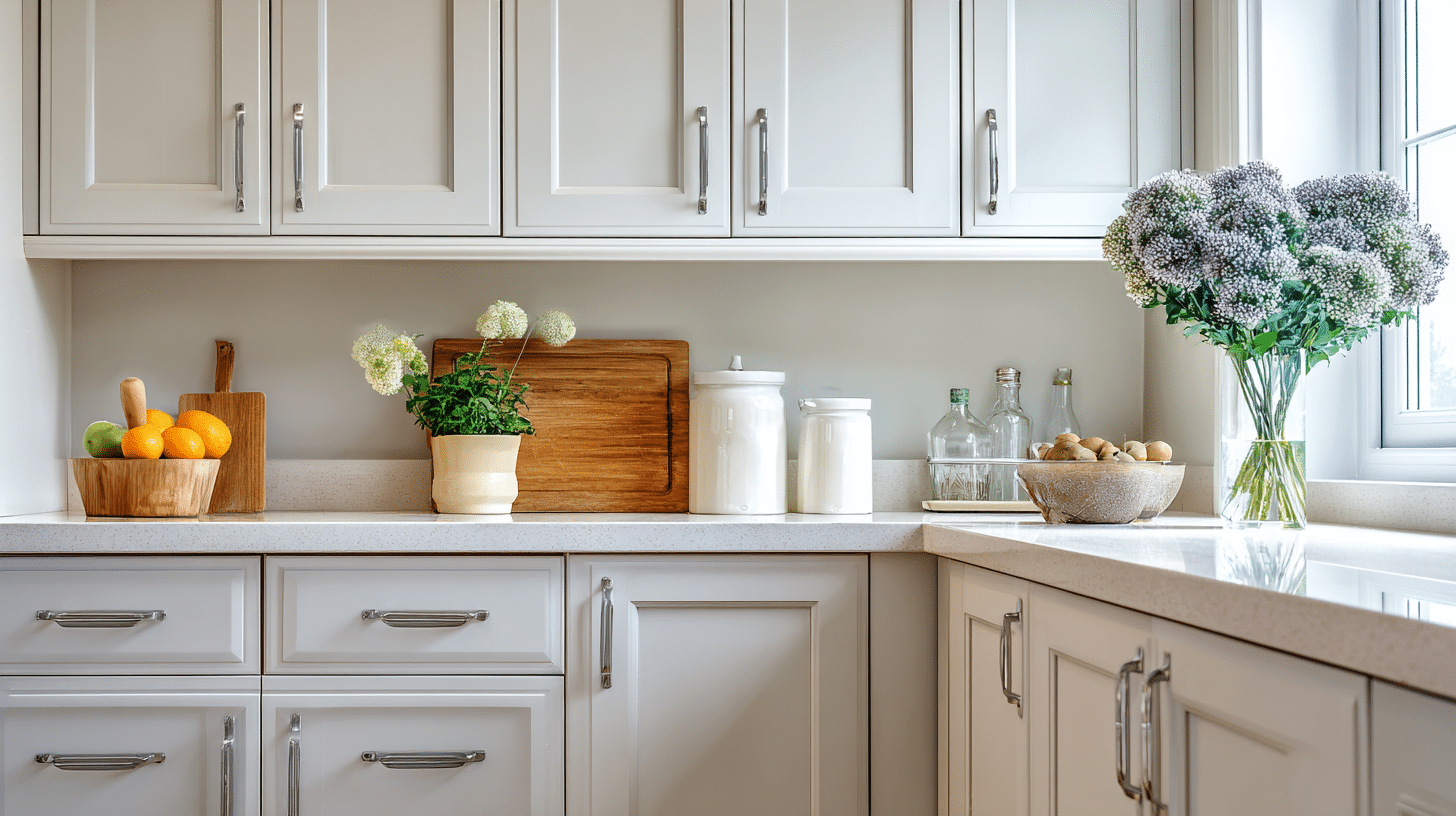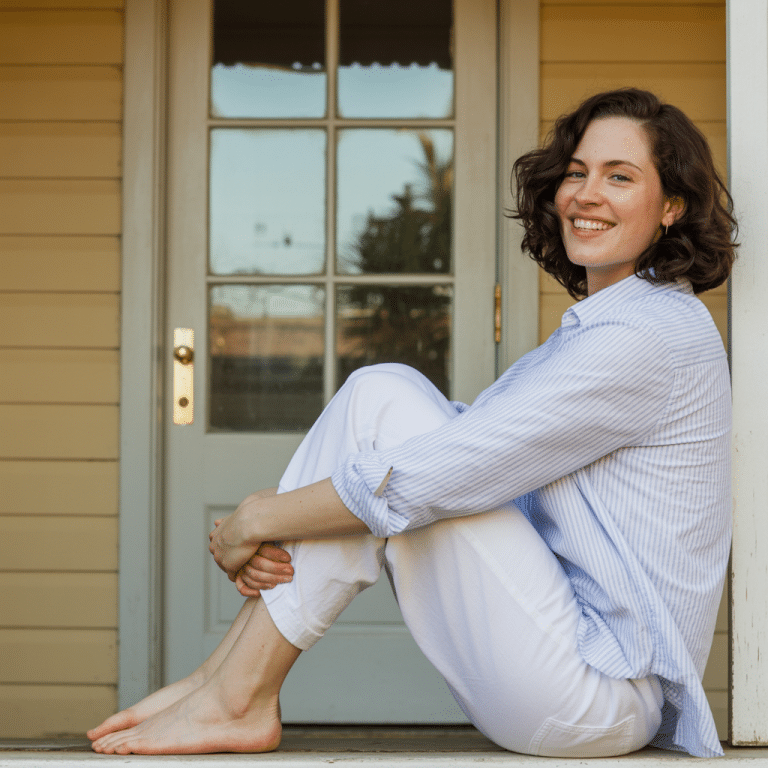Those homes with low-pitched roofs and exposed wooden beams always catch the eye.
Mission style homes bring something different. They mix Spanish colonial roots with American craftsmanship.
These offer open floor plans that let natural light flow through every room. The built-in furniture saves space while looking like it belongs. Those wide porches keep homes cool in summer without cranking the AC. These houses give character and function in one package.
This guide shows what exactly makes these homes special (plus some mission style inspiration for your home interiors and exteriors).
What is Mission Style Home?
A Mission-style home is a type of architecture inspired by the Spanish colonial missions built in California and the Southwest during the 18th and 19th centuries.
These homes became popular in America between 1890 and 1915 as part of the Arts and Crafts movement.
Mission-style houses feature thick stucco walls, red tile roofs, and arched windows and doorways. The design focuses on simple, clean lines rather than fancy decorations.
Most of these homes have flat or low-pitched roofs with curved clay tiles. The style got its name from the old Spanish missions that dotted California’s landscape.
Architectural Characteristics and Design Elements
Mission-style homes have a special charm that sets them apart from other house designs. These homes bring together Spanish colonial history with practical American needs.
Key Design Elements:
- Stucco exterior walls – Thick, smooth surfaces that keep homes cool and provide lasting protection
- Red clay tile roofs – Low-pitched roofs with curved tiles that handle weather well
- Arched doorways and windows – Rounded openings that create a welcoming, soft appearance
- Exposed wooden beams – Heavy timber supports that add rustic character to ceilings
- Courtyards and patios – Outdoor living spaces that connect indoor and outdoor areas
- Bell towers or parapets – Decorative roof elements inspired by old Spanish missions
- Earth-tone color schemes – Warm browns, oranges, and yellows that blend with natural settings
These design features work together to create homes that feel both historic and comfortable. Each element serves a purpose while adding to the overall beauty of mission-style architecture.
Popularity of Mission Style Homes Over the Years
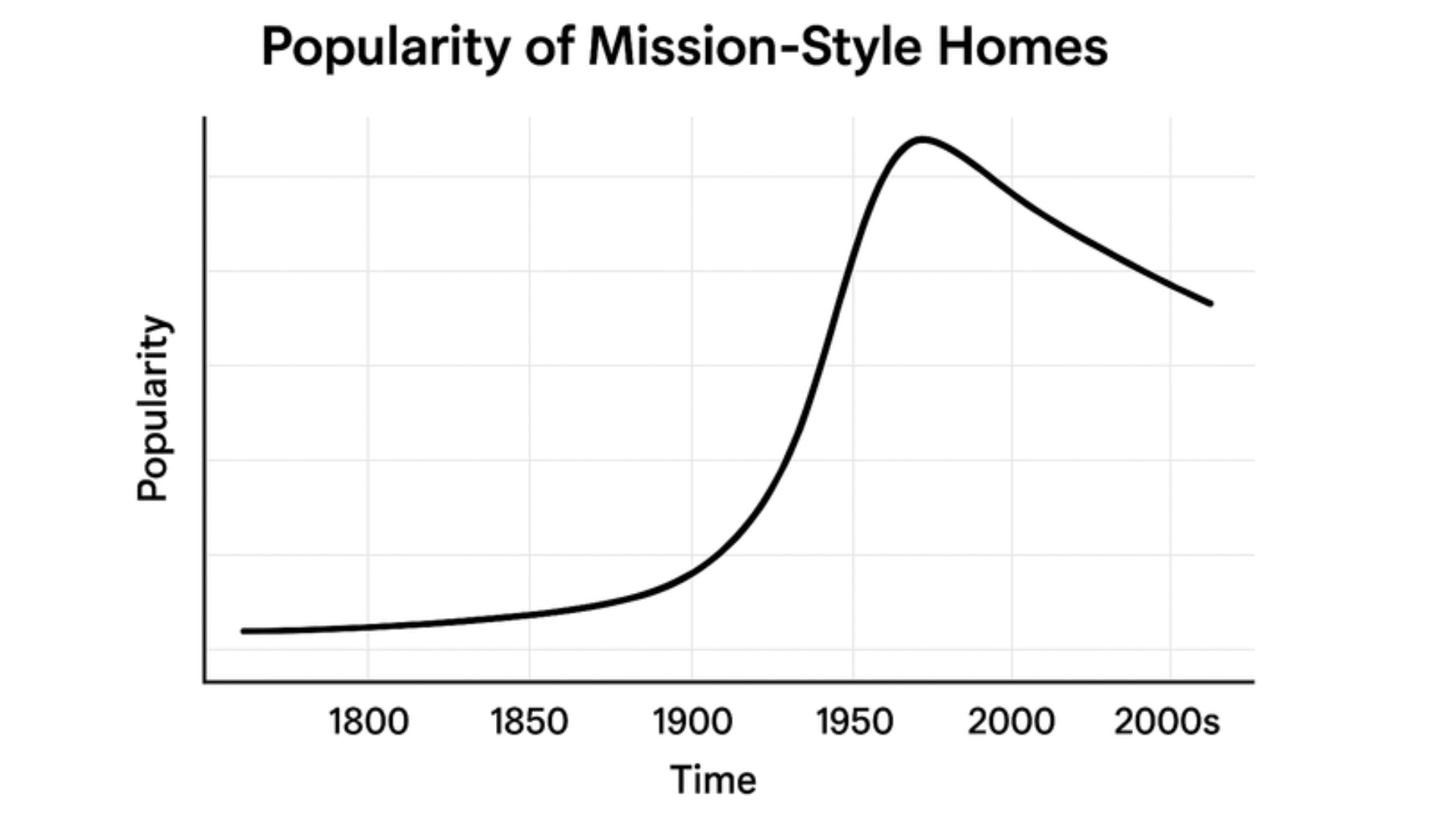
Mission-style homes have experienced several waves of popularity since the late 1800s.
The first big boom happened between 1900 and 1915 when Americans fell in love with the simple, peaceful design. California led this trend, and soon other southwestern states followed.
After World War I, the style became into Spanish Colonial Revival, which stayed popular through the 1920s. The popularity dropped during the 1930s and 1940s as modern styles took over.
However, mission style made a strong comeback in the 1960s and 1970s. Suburban developers loved building these homes because families wanted outdoor living spaces and distinctive looks.
Today, mission-style homes remain popular, especially in warm climates. New construction often blends traditional mission features with modern amenities.
Design History of These Homes
Mission-style homes have a rich story that goes back over 300 years. These houses started as simple religious buildings built by Spanish monks in California and the Southwest.
The style later caught the attention of American architects who loved its peaceful and practical design.
1700s-1800s
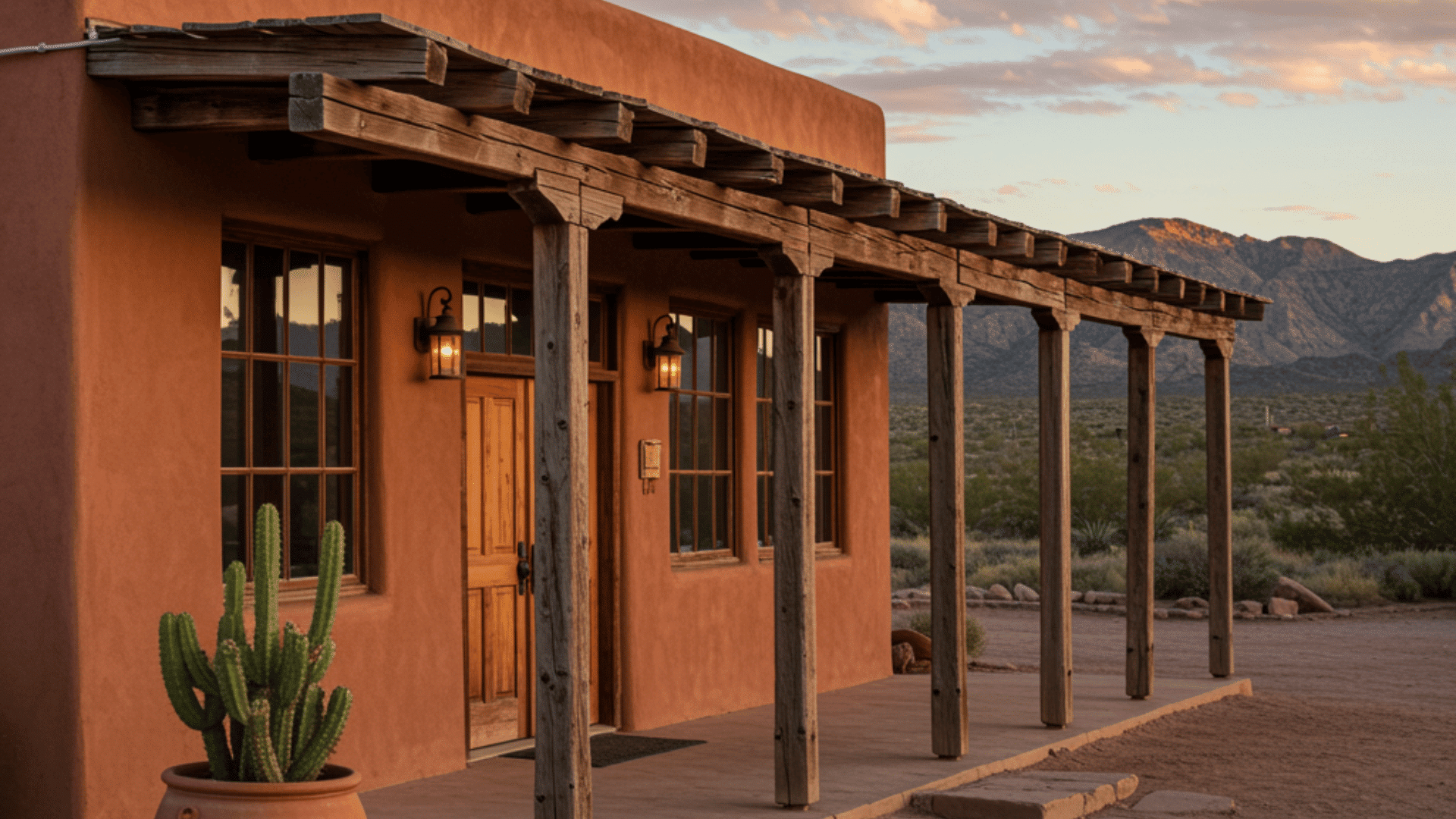
During this period, the original mission buildings featured thick adobe walls made from mud, straw, and clay. These structures had simple rectangular shapes with flat roofs. Small, deep-set windows kept interiors cool.
The buildings used local materials and focused on function over decoration. Bell towers stood tall to call people to worship.
Key Events:
- Spanish missionaries arrived in California and the Southwest
- Franciscan monks built the first mission buildings
- Adobe construction methods were developed
1890-1915
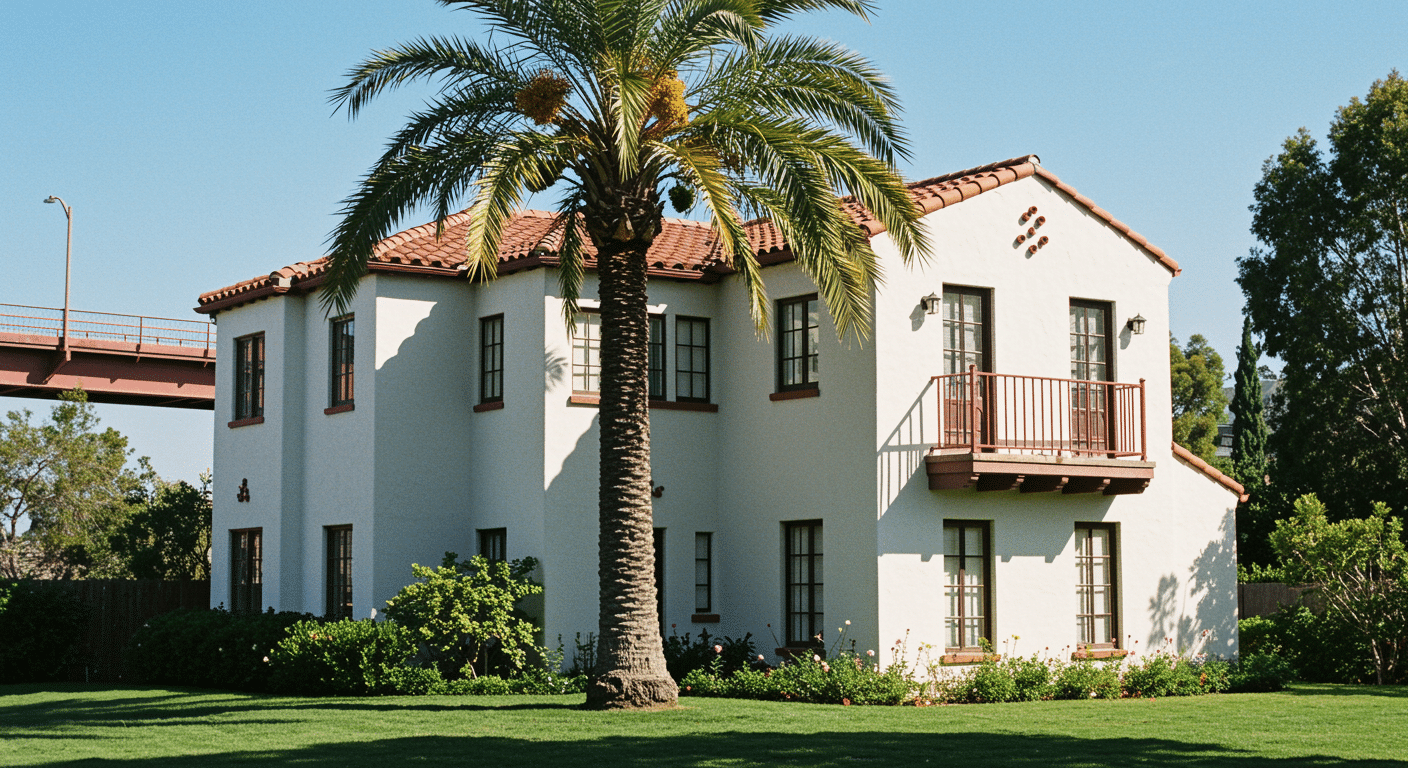
Early mission-style homes copied the thick stucco walls and red tile roofs from original missions. These houses featured arched doorways and windows with heavy wooden doors.
Builders added courtyards and patios for outdoor living. The homes used earth-tone colors like tan, brown, and cream to match the desert landscape.
Key Events:
- Arts and Crafts movement gained popularity
- American inventors began studying Spanish missions
- The first residential mission-style homes were built
1900-1910
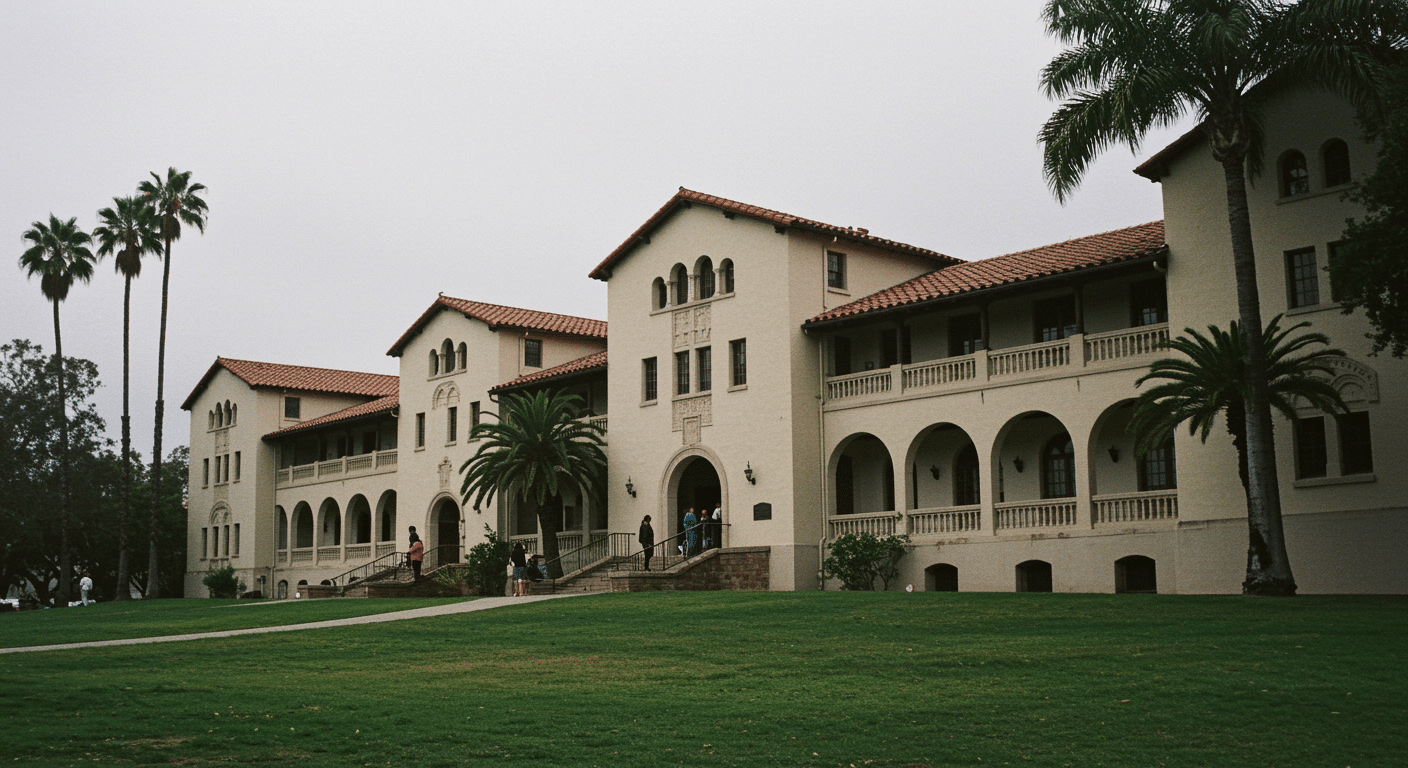
Mission homes during this time became more refined while keeping their simple charm. Houses featured low-pitched roofs with curved red clay tiles.
Stucco walls became smoother and more polished. Windows grew larger but kept their arched tops. Many homes added decorative parapets along the roofline for extra visual appeal.
Key Events:
- Peak popularity across the Southwest
- Mass production of clay roof tiles began
- Railroads brought materials to remote areas
1915-1930
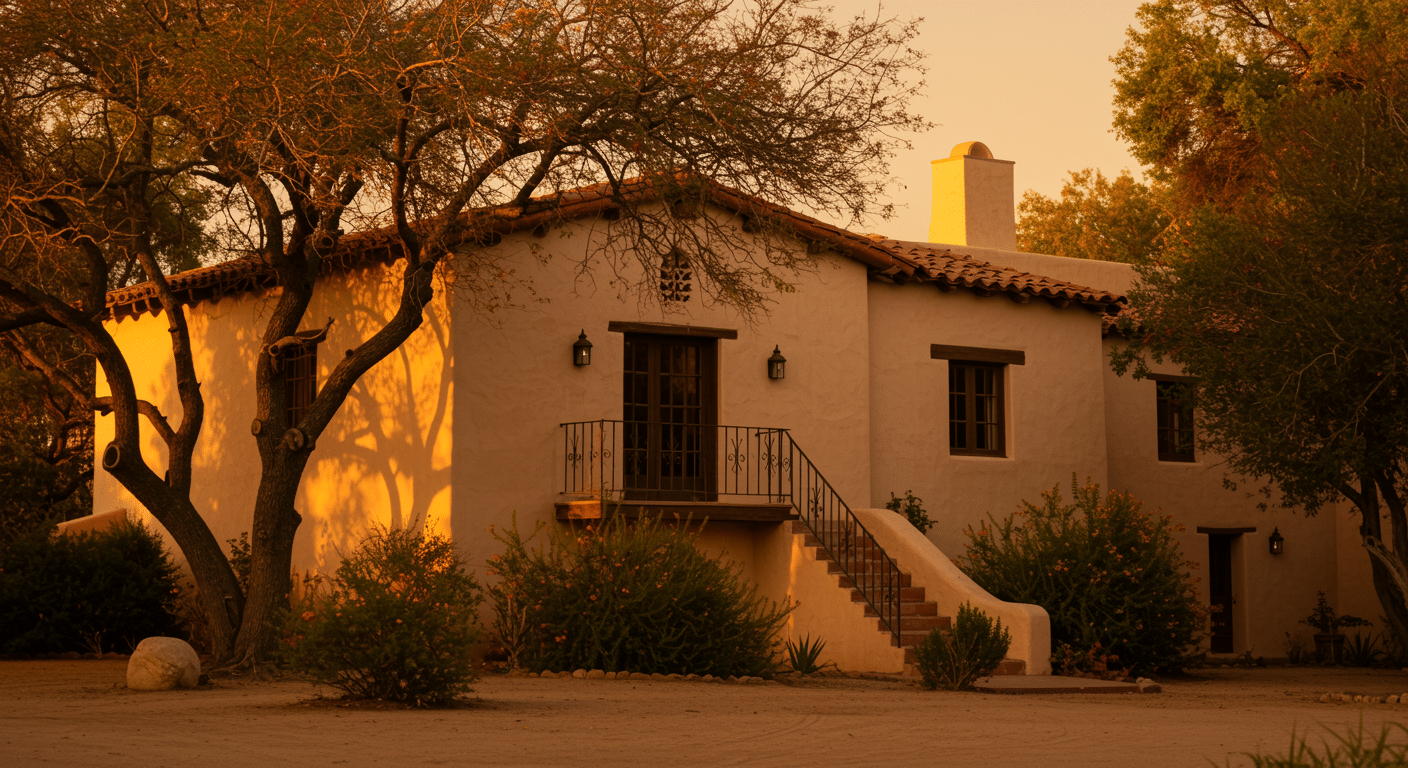
Later, mission-style homes became more elaborate and decorative.
Builders added wrought iron details around windows and balconies. Tile work became more colorful and detailed.
Courtyards grew larger with fountains and gardens. Some homes featured multiple levels and more complex rooflines while maintaining the basic mission appearance.
Key Events:
- Spanish Colonial Revival style emerged
- Creators mixed mission with other styles
- Wealthy families built larger mission-inspired homes
1960s-Today
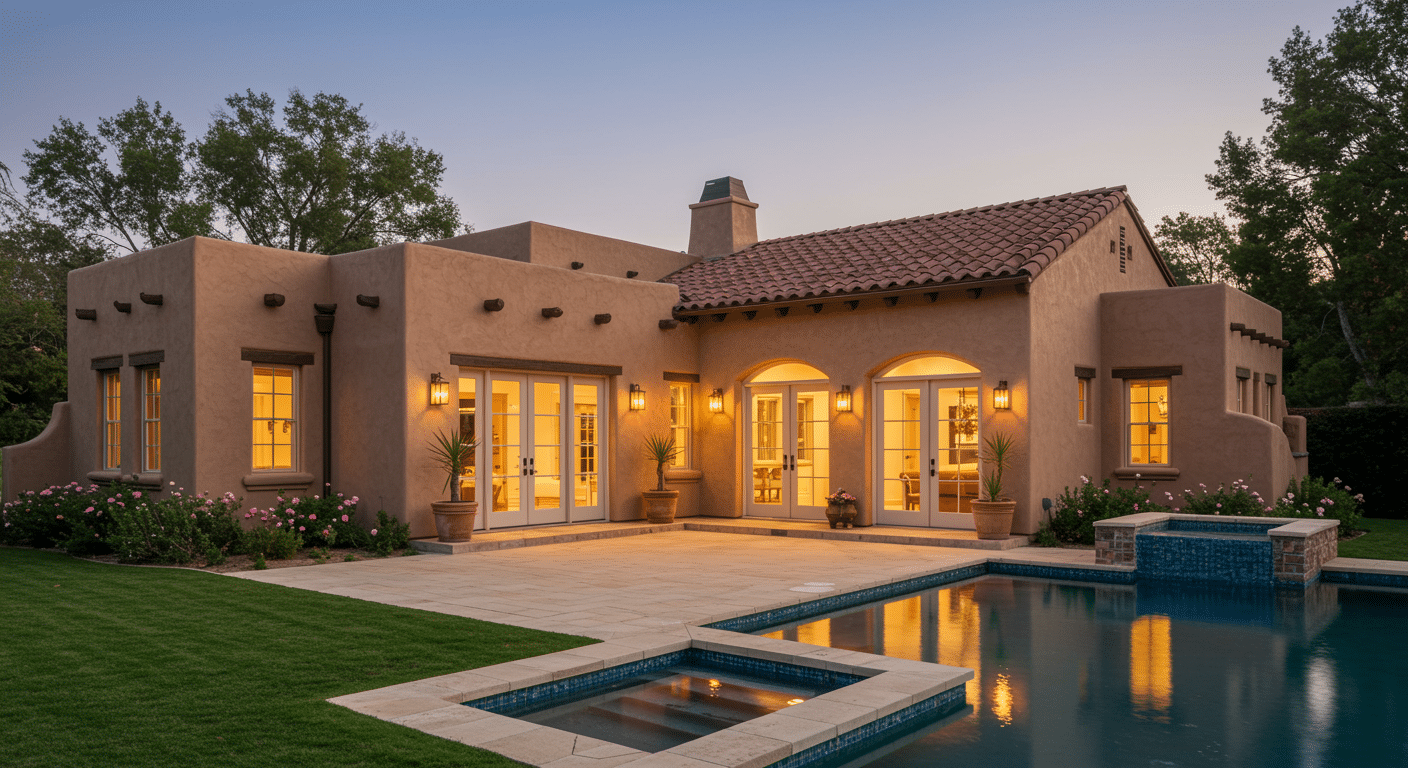
Today’s mission-style homes combine old looks with new features. The thick walls have better materials inside to keep houses cool. Large glass doors open to outdoor spaces and pools.
The cooling systems work well with thick wall construction. Builders use new methods but keep the old style. You still see rounded windows, clay tile roofs, and natural colors.
Key Events:
- New neighborhoods made this style popular again
- Better building methods made homes stronger
- People wanted thick walls to save energy
This architectural style moved from religious buildings to family homes, keeping the same peaceful and practical design principles that made the original missions so special.
Indoor and Outdoor Inspos Ft. Mission Style Homes
Some focus on outdoor living spaces, while others highlight the beautiful arched details. Modern builders have found creative ways to update these traditional designs for today’s families.
If you’re thinking about building or buying a mission-style home, you have many great options to choose from.
Each type of mission home offers its own special features while keeping the classic Spanish-inspired look.
1. Terracotta Color Palette Interior
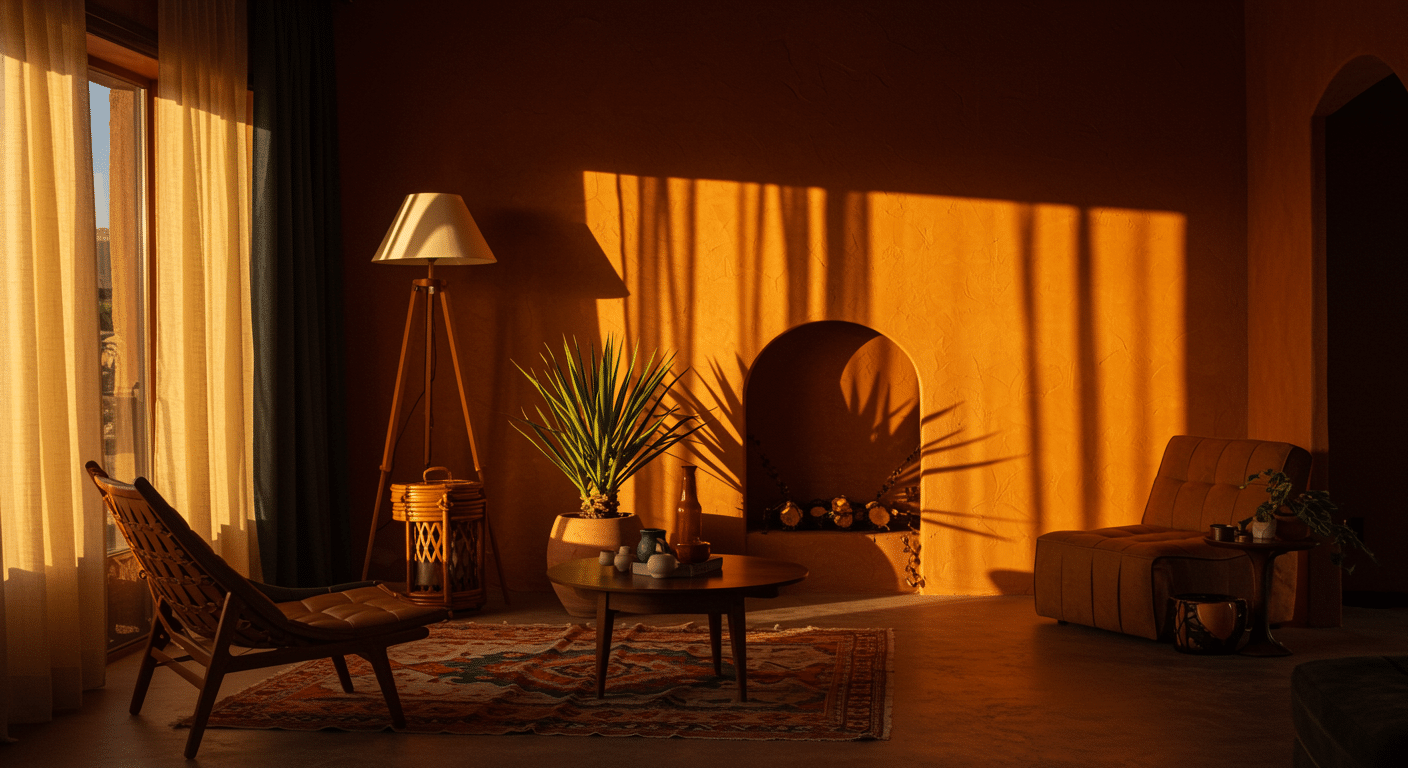
Start with warm, natural colors like terracotta, ochre, and cream for your walls and fabrics. Add deep blue or sage green accents to create a nice contrast.
Paint one wall in textured terracotta and hang neutral linen curtains for a cozy Southwest feel. These earth tones make any room feel warm and welcoming.
2. Exposed Wooden Beams and Furniture
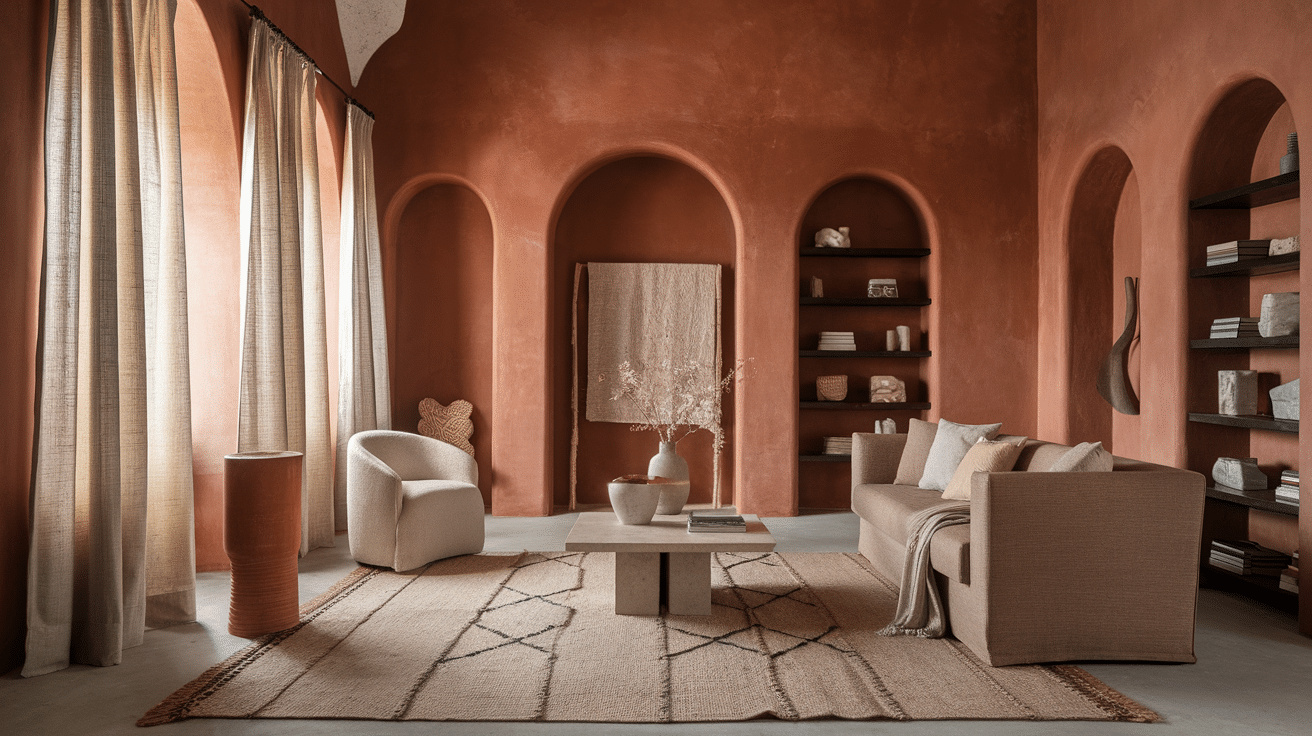
Include dark-stained wooden ceiling beams or vigas, a signature of Mission Revival architecture, to add rustic touch to it.
Complement with sturdy, handcrafted Mission-style furniture, like an oak dining table or a leather armchair with straight lines.
3. Mission Style Home Interior with Textured Stucco Walls
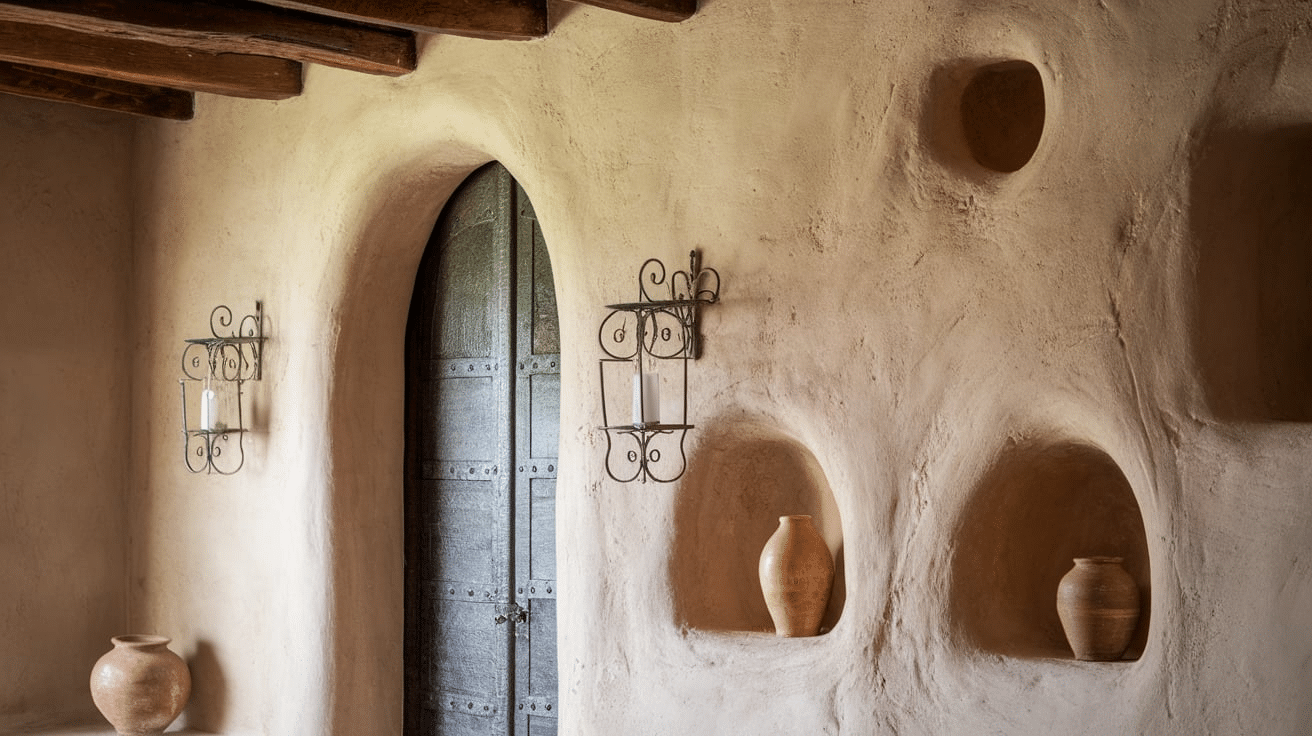
Apply smooth or lightly textured stucco to interior walls for an authentic Mission feel. This pairs well with arched doorways or niches, which can house pottery or wrought-iron chandeliers.
For a modern twist, use a matte stucco finish in a soft white or beige, creating a clean backdrop for colorful ceramic accents or modern art.
4. Handcrafted Tile Accents
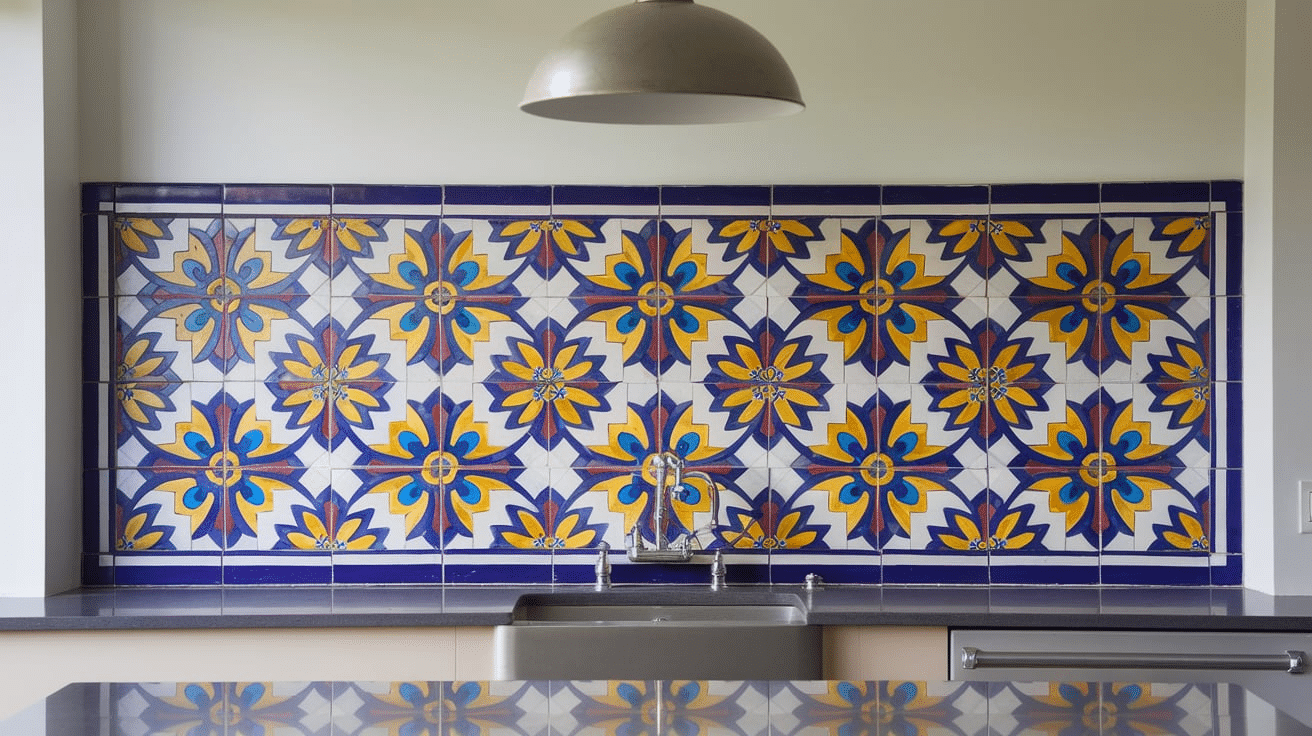
Blend hand-painted ceramic tiles, like Talavera or Saltillo, for kitchen backsplashes, bathroom walls, or fireplace surrounds. Opt for bold geometric patterns or intricate floral designs in vibrant blues, yellows, and reds.
A modern approach might involve using solid-colored tiles in a herringbone pattern for a subtle nod to tradition.
5. Wrought Iron and Ornamental Metalwork
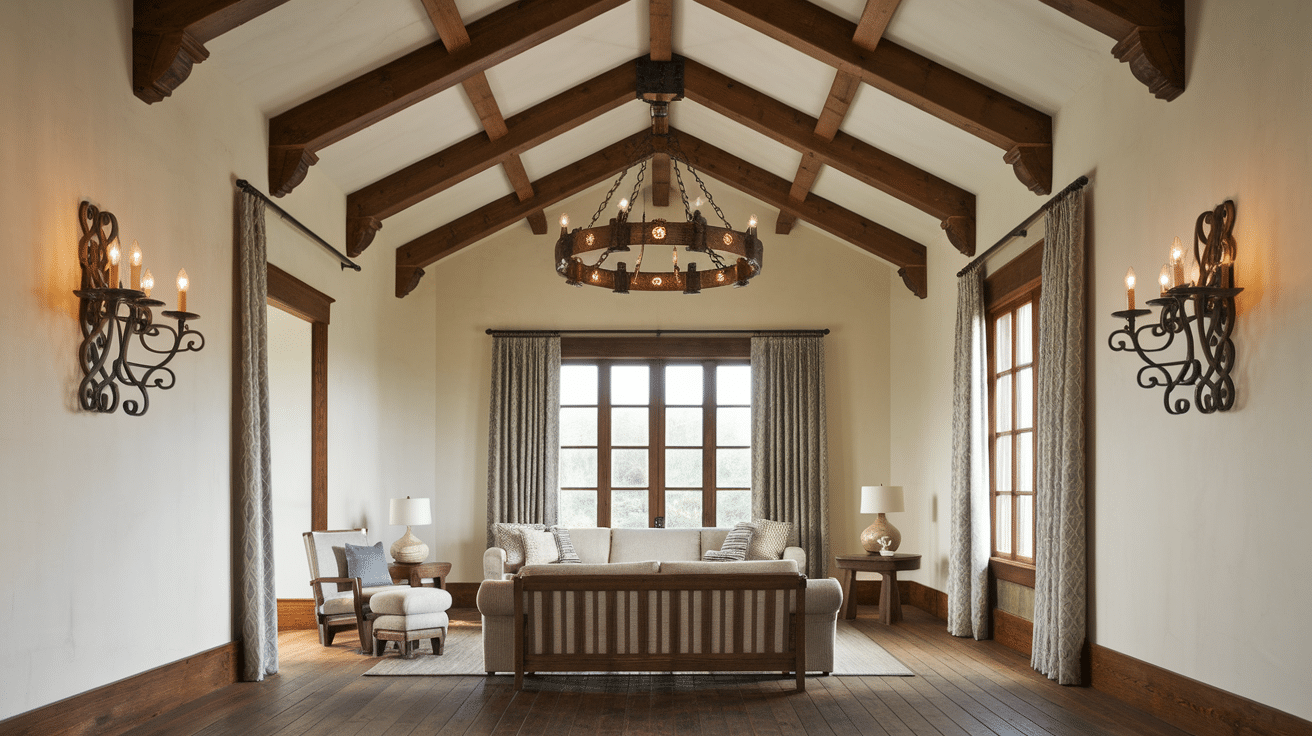
Add wrought-iron chandeliers, wall sconces, or curtain rods to evoke Mission style’s Spanish heritage. These pieces should be simple yet bold, with clean lines or subtle scrolls.
For example, a forged-iron chandelier over a dining table can serve as a focal point, paired with minimalist wooden chairs to balance the look.
6. Indoor-Outdoor Flow with Courtyard Elements
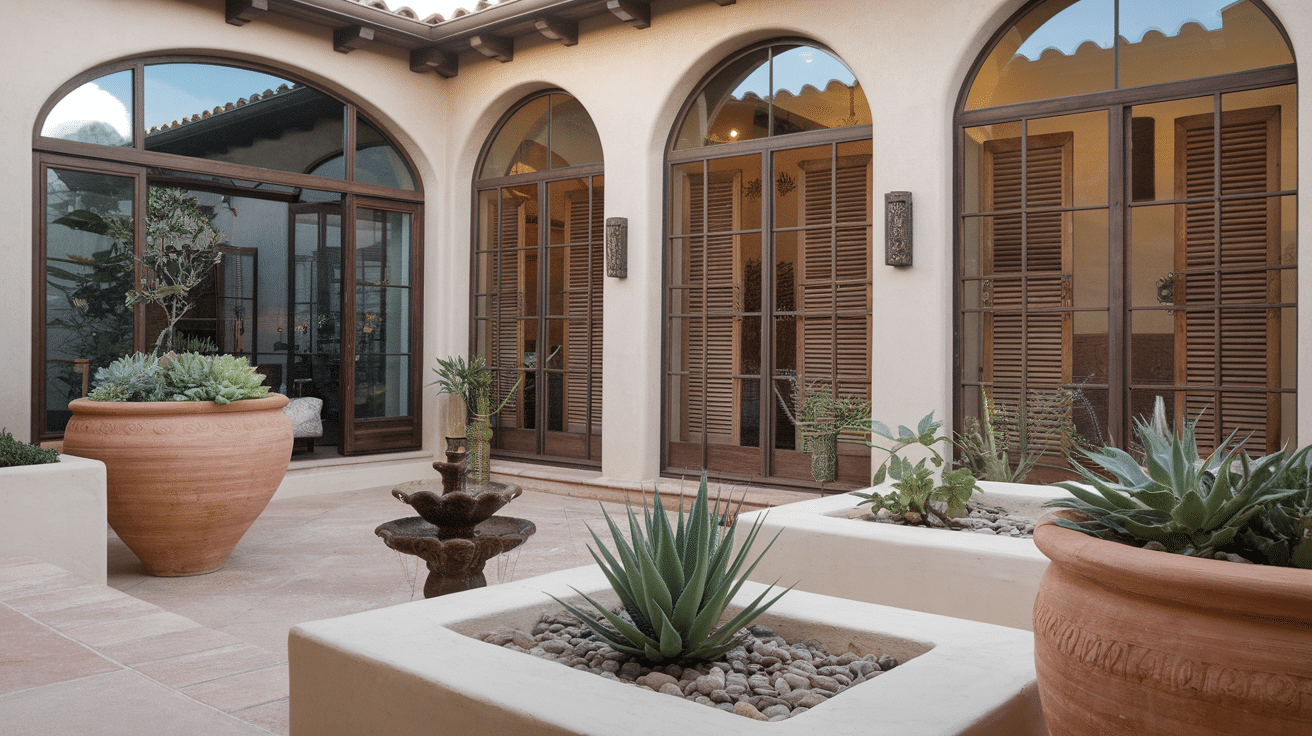
Create a seamless transition to outdoor spaces by including Mission-style courtyard vibes indoors. Use large terracotta planters with succulents or citrus trees in living areas, and install wide, arched windows with wooden shutters.
Add a small indoor fountain or water feature to mimic the calm ambiance of a Spanish mission courtyard.
7. Artisan Textiles and Natural Materials
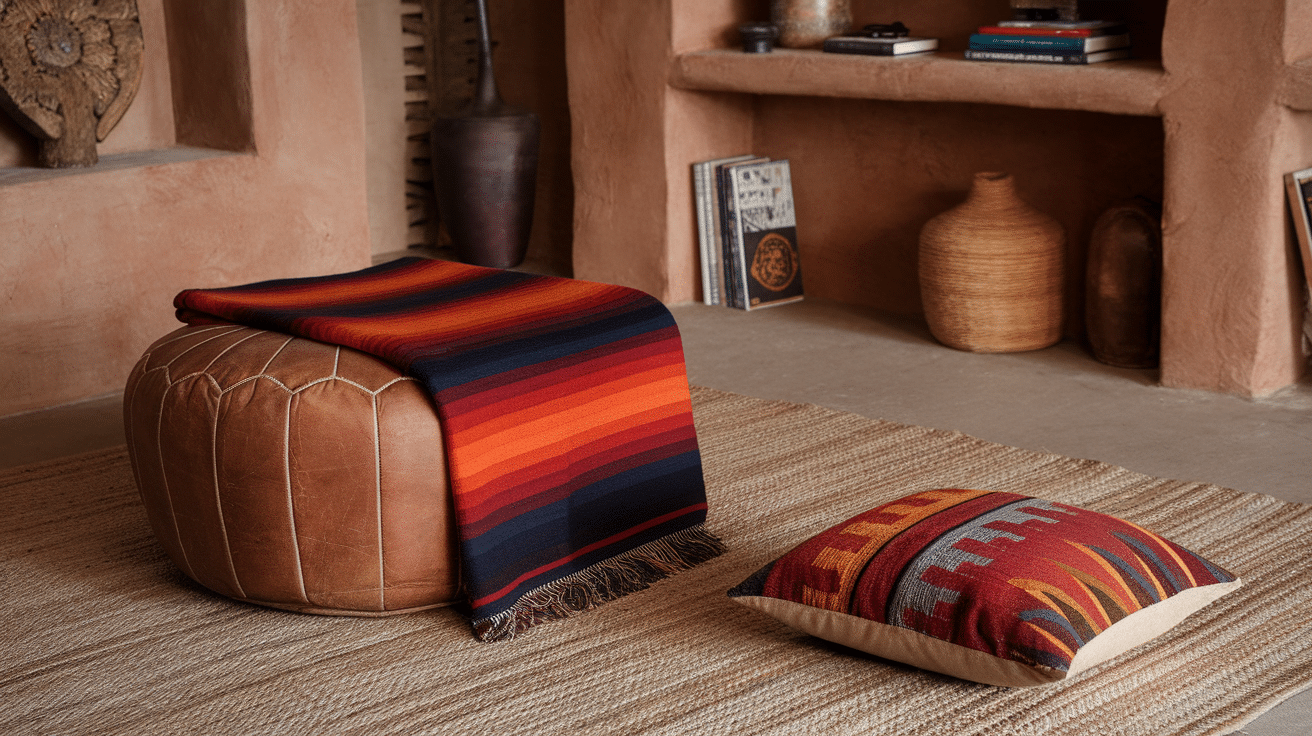
Layer spaces with handwoven textiles like serape blankets or kilim pillows in earthy reds, oranges, and browns. Pair these with natural materials like leather ottomans or jute rugs to improve the organic feel.
For a 2025 update, mix in modern fabrics like linen in neutral tones to keep the space airy and contemporary while staying true to Mission roots.
Wrapping It Up
Mission style homes are more than a design; they’re a lifestyle choice built on history, comfort, and authenticity. With mission-style architecture, every curve, tile, and beam serves a purpose rooted in tradition.
Mission style fits homeowners who want something different from cookie-cutter designs.
Ready to find your own Mission style home? Start by looking at neighborhoods built between 1890 and 1920.
Check local historical societies for home tours. Talk to real estate agents who specialize in older properties.





